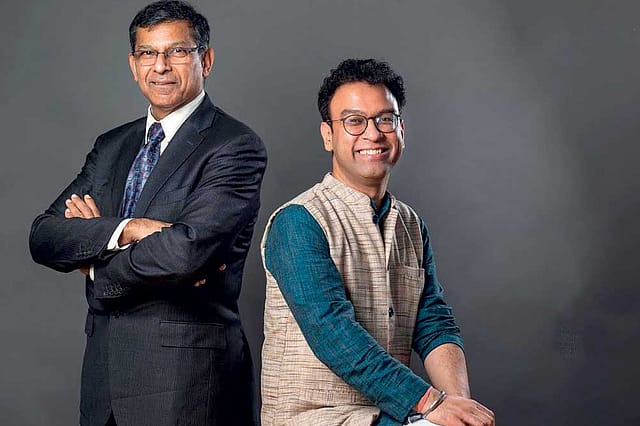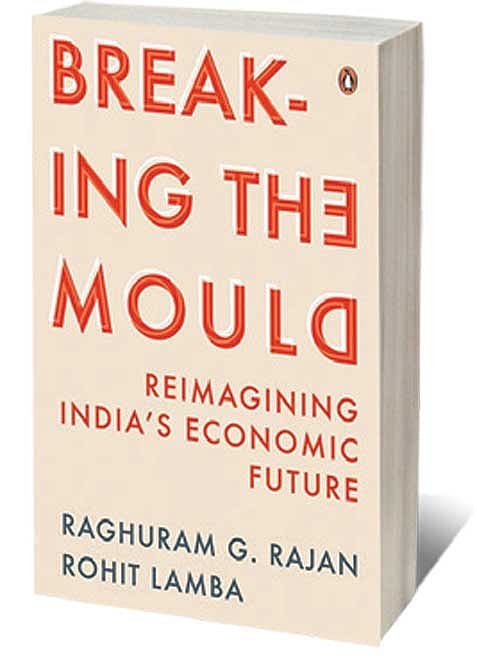Misreading India

RAGHURAM RAJAN IS an economist of repute. Of late he is also a political activist. The former Press Secretary to the President, Ashok Malik recently tweeted that when they were RBI governors Rajan (and Urjit Patel) could not decide whether they were public intellectuals or public servants. In this book, Rajan (and his co-author Rohit Lamba) can’t decide whether they are economists or political activists.
There are two main takeaways from this book. First, that India should abandon a proactive approach towards becoming a manufacturing powerhouse and focus on services. Second, India should be wary of authoritarianism because such a system thwarts the creativity and innovation required to be the kind of ‘knowledge services-led’ economy that the authors foresee as India’s key to prosperity. Both are disingenuous.
India has been a services-led economy since the economic reforms of 1991. It may not have been the design, but that’s the way it panned out. And while it has delivered impressive growth and a reasonable increase in per capita income, it hasn’t delivered, in over 25 years, either double-digit growth or sufficient decent jobs or the kind of quantum increase in per capita income that countries in East Asia which built strong manufacturing sectors succeeded in achieving. Suggesting that a focus on high-end services will break the mould, as the authors do, doesn’t seem grounded in reality. Indian engineers, sitting in Bengaluru, Hyderabad and Pune are already doing high-end design for the world’s leading companies, but that hasn’t solved India’s economic challenges. Successful countries capture the maximum value addition through original equipment manufacturers via their Apple, Samsung or Sony, or indeed Tesla and BYD. That doesn’t happen unless there is manufacturing capability.
2025 In Review
12 Dec 2025 - Vol 04 | Issue 51
Words and scenes in retrospect
After 1991, trade liberalisation without accompanying reforms in land, labour and capital markets led to a premature deindustrialisation, a fact that the authors acknowledge. Many of these reforms are still pending. All that the government of Prime Minister Narendra Modi has done via its Production Linked Incentive Scheme and moderate tariff increases, is giving manufacturing a level playing field and a chance to take off. It is baby steps in industrial policy and compared to the substantial interventions that the advanced economies are making post-Covid, and that China has been doing all along, it could be argued that the government needs to do more. The authors are in any case pessimistic about a manufacturing-based, export-led model for India. India may not replicate China, but the size of the global merchandise trade market is around $ 22 trillion. India has a less than 2 per cent share. Even if it doesn’t reach China’s 12 per cent share, there is a runway of opportunity, particularly in the China-plus-one geoeconomics.
The second takeaway on authoritarianism is simply gratuitous. And it is here that the book strays firmly out of economics into politics explicitly in its last chapter ‘The Wrong Way’. For a start, the assertion that India is becoming authoritarian and less accepting of freedom and creativity is problematic. In the last 10 years, which troubles the authors, India has built the third largest startup ecosystem in the world with over 100 unicorns, hardly an indicator of suppressed creativity and innovation. India has built a unique worldclass digital public infrastructure—the authors credit it to Aadhaar under the UPA—but the digital revolution has gone well beyond that. Of course, there are shortcomings in India’s R&D effort, both public and private, which the authors correctly point out, but that is a legacy issue, nothing to do with the government in office.
Also, as economists, Rajan and Lamba should know that while authoritarianism can lead to very poor economic outcomes it can also lead to great economic outcomes (look at China, South Korea, Singapore). Democracy is morally and ethically the better system, but argument and debate alone don’t deliver prosperity. Otherwise, India should have been a developed country before 2014. By trying to make an argument against Modi, the authors skip all the nuances, rigour and reality.
Despite a promising title, in the end, the book reads like a familiar trope of its lead author in his political activist avatar.

